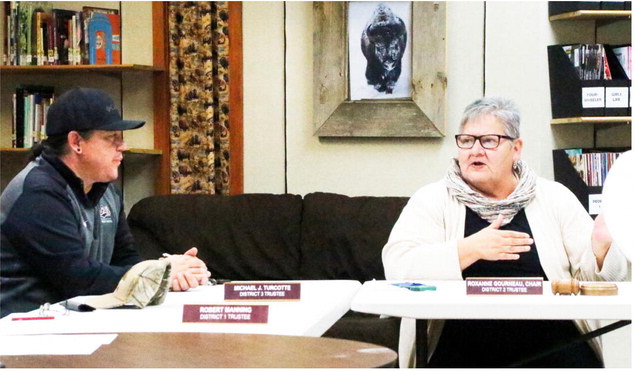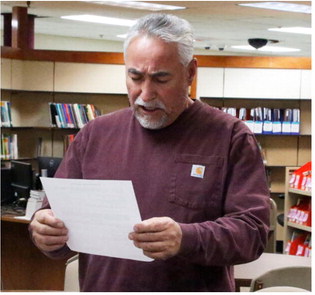Changing Attitudes Key To Addressing Ageism
To Age Well, Experts Say, Kids Need Education About Growing Old
Valley Journal
Who’s getting older? We all are. Yet denial, misinformation and fear often characterize this universal experience.
One hundred years ago life expectancy was about 47 years. According to a report from the Centers for Disease Control and Prevention, by 2050 one in five Americans will be 65 or older. Lengthening lifespans require a more informed and positive approach to aging, both for individuals and society. Ann Karpf, British author of “How We Age,” said, “Each time we see an older person, we need to imagine them as our future self, and rather than recoil from their wrinkles or infirmities, applaud their resilience. We need to re-humanize older people.”
In America, depictions of seniors often land in two opposite scenarios: the “ill-derly,” faced with death, disease, dementia and dependence, or the carefree elderly depicted as witty, wise and living their “golden years” in a warm climate and gated community. For most American seniors, neither of these stereotypes represents the actual aging experience.
Susan Kohler, CEO of Missoula Aging Services, said that “In fact, only 5% of older adults end up in an institution like a nursing home,” while the National Institute on Aging reports “millions of older adults struggling to meet their monthly expenses.”
Ageism — stereotyping and discriminating against people because they are old — permeates television (especially commercials), literature, movies and our language, perpetuating and reinforcing negative stereotypes about elderly people and the aging process. A brief scan of greeting card displays provides evidence of the dark humor used to address getting older.
Gerontophobia (fear of aging) is exploited by the marketing of beauty products that teach people to fight aging to the bitter end. Kohler said, “the number one form of discrimination in our country today is ageism.”
American children are socialized to believe the later stages of life promise nothing but negative, degenerative experiences ending in a care facility. “Unfortunately,” Kohler said, “schools take children to sing at nursing homes and the kids think that is where everyone old ends up.”
Influential developmental psychologist Erik Erikson, famous for his analysis of the psychosocial stages of human development, has said, “by fearing aging we keep ourselves from living full lives.”
According to a 2019 National Vital Statistics Report released by the Centers for Disease Control and Prevention, children born in America today can expect to live 80 years and possibly longer. Considering American perceptions and attitudes about aging, adults may enter their later years believing a lifetime of negative myths and misinformation about this basic life process.
In a 2009 study funded by Canada’s Social Sciences and Humanities Research Council, behavioral psychologist Sheree Kwong See and other researchers tested young children to discover how early age bias begins. They concluded that ageist attitudes begin as early as age 2. Further, they found that children can and do interact with and treat the elderly unfavorably based on negative stereotypes, and that they later 'become their stereotypes about themselves as they grow older.'
Founder and past director of both the Teaching and Learning about Aging Project and the Center for Understanding Aging, Fran Pratt said, “Children learn about aging whether we teach them or not. The issue is not whether they learn, but rather what they learn about the lifelong process of growing up and growing older.”
Sandra L. McGuire, Ed.D., a fellow at the Association for Gerontology in Higher Education who serves on the association’s K-12 Education Committee, wrote in 2017 that with accurate information and positive attitudes about aging, “[we] will be able to realize that old age does not have to be a time of personal and societal devaluation, but a time of continued growth, development, and fulfillment.”
Ashton Applewhite, author of “This Chair Rocks: A Manifesto Against Ageism,” makes the case for reexamining attitudes toward aging and involving children in the process. “We need to enlist young people in this battle too,” she writes. “They’re the ones who are going to create the culture of the future.”
Educating K-12 students about aging can help promote realistic attitudes as well as provide important information necessary for making critical decisions that ultimately affect how well people age. Yale University published research in 2015 indicating that an individual’s attitude about how they will age is predictive of how they will spend their later years. Holding negative beliefs about getting older also correlates with biomarkers for Alzheimer’s disease.
But as Rona J. Karasik, director of the department of gerontology at St. Cloud State University in Minnesota, stated by email, “Aging is often a difficult subject to get into the school system — in part because many people don't want to think about aging.”
A five-year study at Utica College made clear the challenges to implementing aging curricula. It has not been a traditional topic, and teachers expressed concern about making room for it in an already full health education schedule. Teachers trained in aging curricula found executing the training at their home schools difficult. If they didn’t have another staff member to support them, the program floundered. Teachers tended to abandon the program for lack of buy-in.
When aging curricula are taught, promising results have been seen. Dr. Michael Lichtenstein, professor of medicine and geriatrics at the University of Texas Health Science Center at San Antonio, along with others, showed that children, after participating in a curriculum called “Positively Aging,” used more positive words to describe older adults than the negative words they reported prior to lessons. Children’s post-lesson drawings included fewer people with wrinkles, gray hair and age spots, showing that their perceptions of older adults had broadened. The study also revealed that students gained a more balanced understanding of the aging process and learned that sickness, inactivity and death can occur at any age.
Learning about aging also happens outside the classroom. In recent years a more honest depiction of and approach to aging seems to be gaining momentum.
Movies like “Age of Champions,” which shows real-life senior Olympic athletes competing in senior games, and Robert DeNiro’s portrayal in “The Intern” of a 70-something retiree who goes to work for an online fashion site, may indicate changing societal attitudes.
A 4-H project called “Walk in My Shoes,” developed in Illinois, connects youth and seniors to help young people learn about the aging process and create an intergenerational connection. “You will learn to understand older people better by sharing their experiences,” the project description says.
Foster grandparent programs, which bring older adults into classrooms to assist students needing extra help, are another avenue for introducing children to the subject of aging. This program and others like it provide positive interactions with older adults, and have been shown to make a difference in children’s attitudes about the elderly.
As an advocate for inter- generational understanding who started her career in health care with older adults, Lindsey McDivitt created the blog “A is for Aging, B is for Books,” where she reviews books that tell stories about older adults of diverse backgrounds and interests. “Kids need realistic, positive images of older adults,” she says on her website. “We all do.” She collaborates with McGuire, who authors the “Growing Up and Growing Older booklist,” which is updated annually.
McGuire sums up the way forward against ageism: “The foundation for successful aging should begin during youth and be built on throughout life.”

